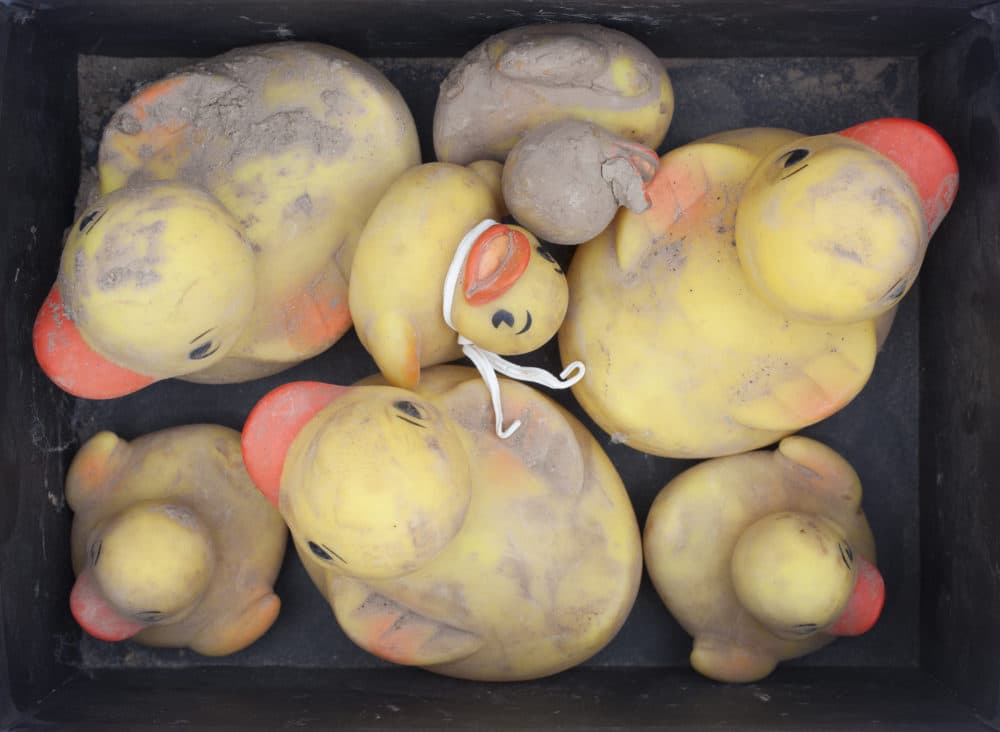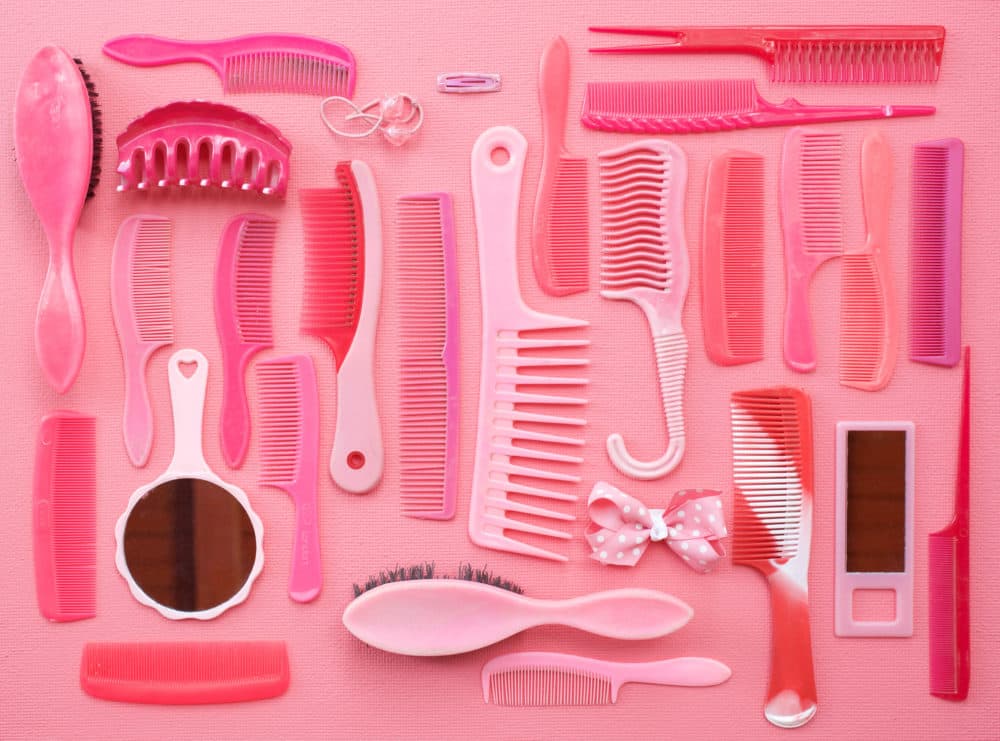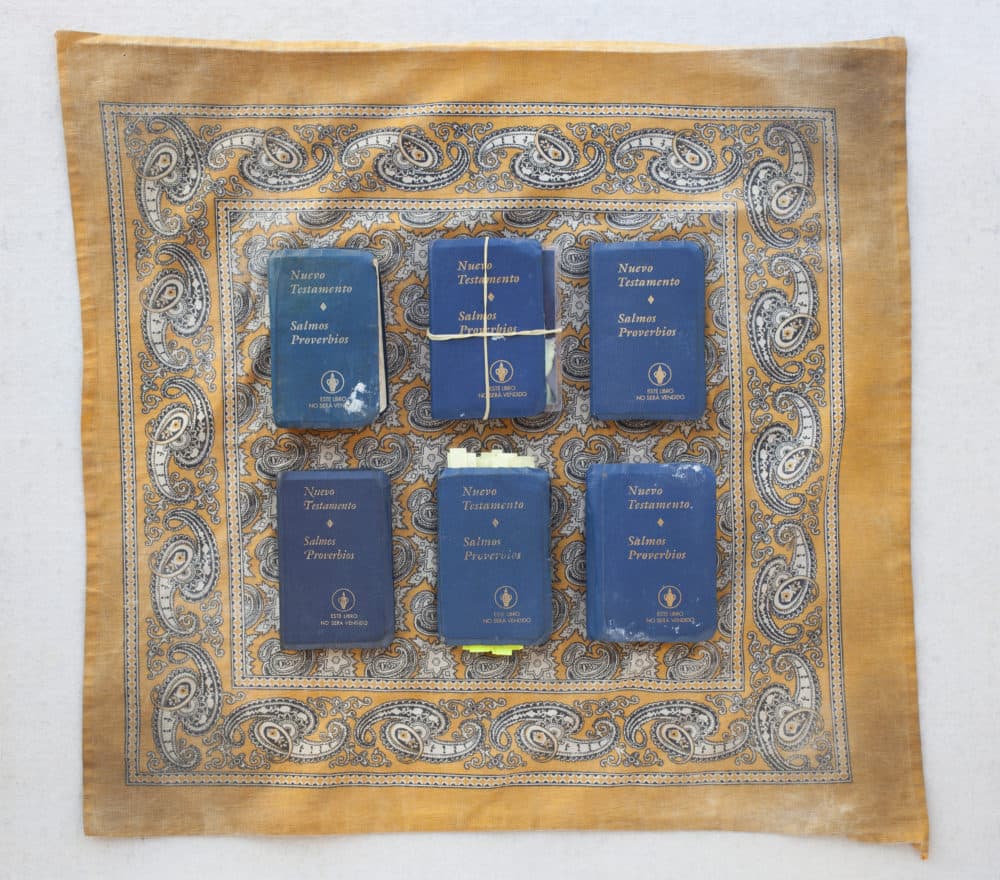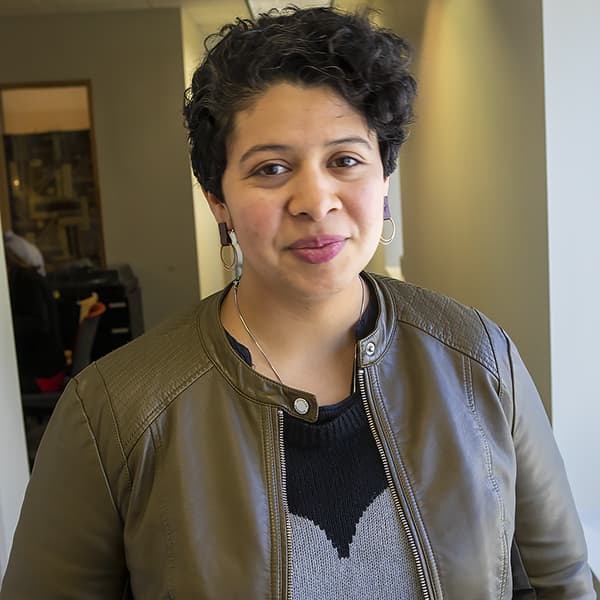Advertisement
This Former Janitor Rummaged Through Trash To Find Treasures From Immigrants. Now It's Art
Resume
As a part-time janitor at a U.S. Customs and Border Patrol Facility, it was Tom Kiefer’s job to collect the trash.
Yet often what he found in the garbage was deeply personal: a diary and stuffed animals, cosmetics and combs, Bibles and rosaries. These were the remnants of hopes — the possessions people brought with them to build a new life.
For seven years at this Arizona way station, Kiefer, a photographer, kept hundreds of thousands of personal effects that were deemed non-essential and confiscated by authorities.
He began documenting these objects, the intersection of cultures at the U.S.-Mexico border, and the power dynamics at play when a government agency dictates what should be kept and what should be disposed of.
The result is a photo series called “El Sueño Americano.” In English, this means “The American Dream,” which is on display through July 28 at the Fuller Craft Museum in Brockton.
“I’m not trying to demonize the agents,” Kiefer said during a talk at the Fuller Craft Museum earlier this month. “I’m trying to humanize the people.”

Among the waste, Kiefer found irreplaceable heirlooms, people’s prized possessions, the kind of things one grabs when fleeing a burning building. There were photographs of couples in love, quinceañera pictures, wallets and passports. In garbage bags, Kiefer discovered what was once indispensable — the very necessary items to survive a treacherous journey across the desert — water bottles wrapped in duct tape, blankets for warmth and non-perishable foods.
The photographer had originally moved to the southwest in 2001 from Los Angeles. Within a few years, he started his first project, "Journey West Exhibit," which focused on black and white images of the landscape and infrastructure. For "El Sueño Americano," Kiefer took the objects back to his studio, arranging and vividly capturing them in hundreds of photos.
“He's actually taking such care with each object because he knows that it was stripped from someone and discarded,” said Beth McLaughlin, chief curator of exhibitions and collections at the Fuller Museum. “He really creates these thoughtful, perfectly composed compositions as a way to represent that dignity."
Kiefer surreptitiously salvaged as much as he could. He would sometimes hide the items among tons of food, which he transported to a local food pantry. Over those years, he also drove in more than 60 tons of food taken from immigrants crossing the border.

“If they knew what I was doing, I would’ve been fired instantly,” Kiefer said noting how quickly he’d grab items. “So just finding a little article like [a prayer book or a rosary] was in a sense miraculous.”
There’s a symmetry to the photographs — the brown wallets lined up row by row, the endless number of shoelaces all piled up. An order in chaos.
He frames ordinary objects with reverence, like a passport photo in a picture frame.
There’s a sacredness to the prayer books, the inscribed rings, the dirty Mickey Mouse sweater that reminded Kiefer of a shroud of the “Virgin of Guadalupe,” revered across Mexico as the mother of God.
The number of toothbrushes, unopened Snickers bars and cans of tuna offer a sense of the massive number of people that are processed at the border every single day.

It makes you wonder, who did these items belong to? In one piece, he takes, tiny dry alphabet soup pasta and uses the letters to write a portion of “The New Colossus,” the sonnet by poet Emma Lazarus located at the base of the Statue of Liberty:
Give me your tired, your poor,
Your huddled masses yearning to breathe free,
The wretched refuse of your teeming shore.
Send these, the homeless, tempest-tost to me,
I lift my lamp beside the golden door!
Kiefer hopes one day these items are kept as an archive, an empathetic record of a singular moment in time and the items we forced people to abandon in their search for the American Dream.
“You know we are all human and the manner in which we currently are treating this group of people is just horrible,” Kiefer said. “...My plan for this archive is for it to end up somewhere that it can be part of our nation’s history like Ellis Island.”
This segment aired on February 22, 2019.
